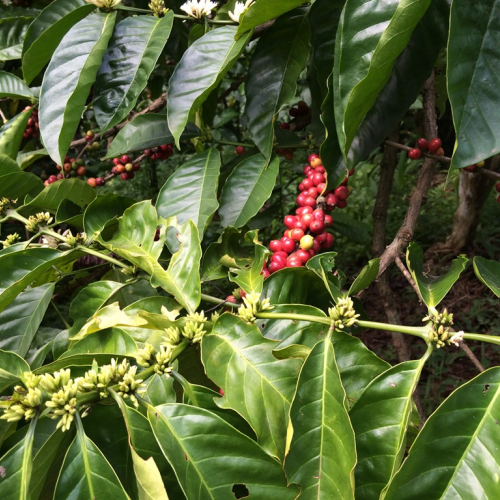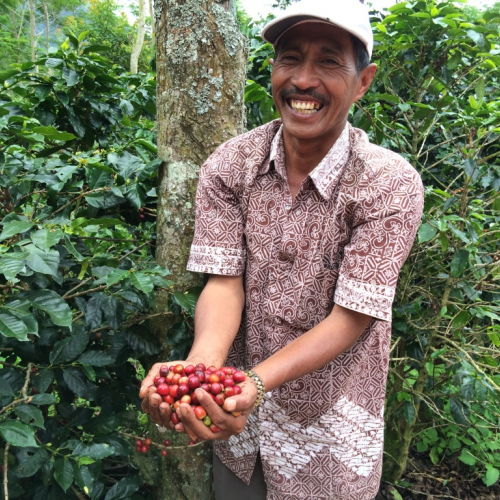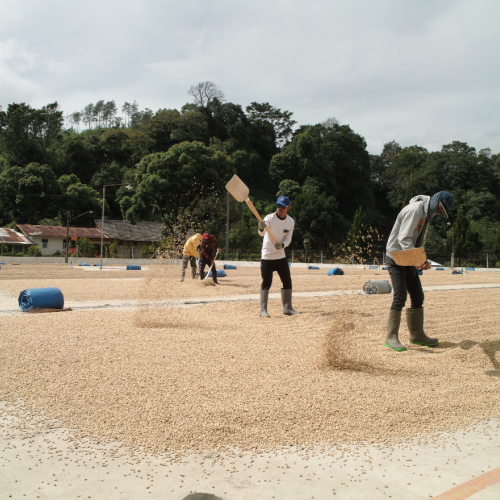Indonesia
Did you know?
About
Indonesia, the largest and most populous country in Southeast Asia, consists of 17.504 islands extending along the equator between the Pacific and Indian Ocean. Sumatra, Java, Sulawesi, Kalimantan (two third of Borneo) and Irian Jaya (western New Guinea) make up 90 per cent of the land area. Most of Indonesia is mountainous and covered with rain forest or mangrove swamps, and there are over 300 volcanoes, some still active. Two third of the population lives in the lowland areas of Java and Mandura.
In general the climate is a tropical monsoon one. Indonesia is rich in energy resources, minerals, forests and fertile soil. It is among the world's top producers of rice, palm oil, tea, coffee, rubber and tobacco. It is the world's leading exporter of natural gas and a major exporter of oil and timber. In recent years manufacturing output has risen. A range of goods are produced including textiles, clothing, cement, fertilizers and vehicles. Tourism is having a significant increasing every year.
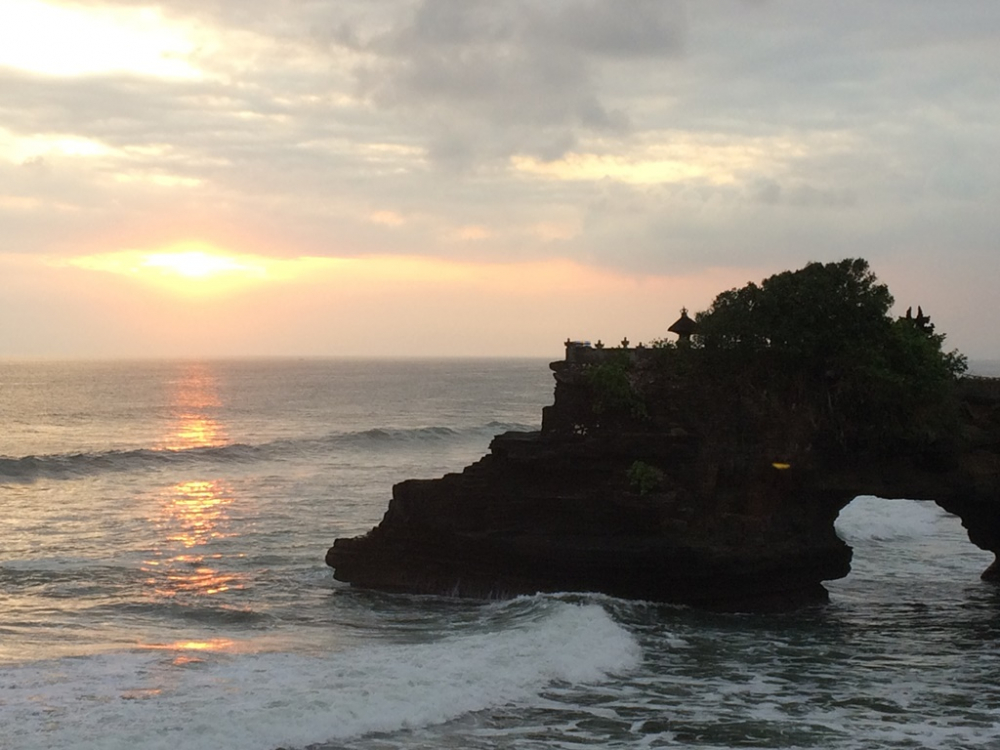
Both Arabica & Robusta
First introduced by Dutch colonisers who planted African Arabica trees in 1696, coffee is one of the oldest, commercially cultivated Indonesian crops. Rust disease ran rampant and almost annihilated the coffee trees about a century ago. Now, most of that acreage has been replaced by disease-resistant Robusta. Indonesian Robusta is slightly spicy or with a smokey aftertaste. As for Arabica, Indonesia faced severe competition from southeast Asian suppliers, providing better qualities, and had to come up with another game plan - namely borrowing from its past to improve its future. The government began reviving Arabica cultivations on estates originally established by colonisers in Java. The Arabica grown on the former Dutch estates is a bean of another colour in contrast to the still predominant Robusta crop and "old" seems to be the operative word in describing or naming it. "Old Government", "Old Brown", "Old Java" designate Arabica warehoused for two years or more. Once matured, the bean turns a light brown, loses some of its acidity and gains body and sweetness. Of the three, the last was considered a gourmet-level brew until just after World War II. Although it has been resurrected, it is still sometimes hard to find.
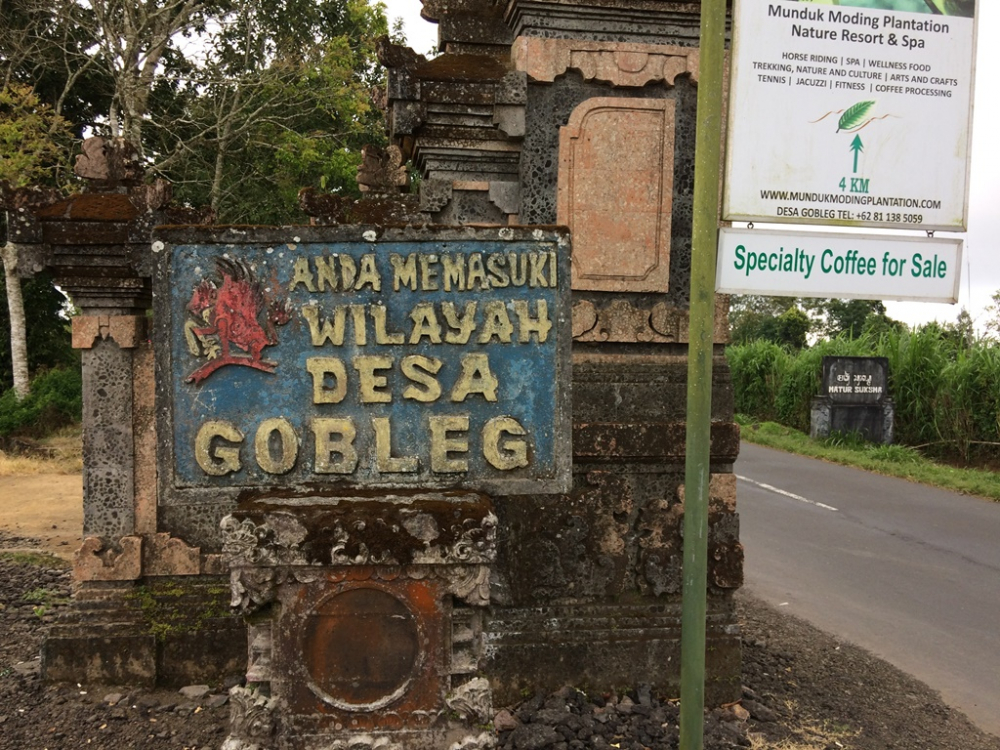
Originally, coffee was grown on plantations which were mainly in Java, a recognised name well known for its quality. Since then, the tremendous growth in the economy and in the population of Java has forced coffee to move to a large extent to Sumatra and other islands. At the same time, the majority of the coffee has been switched to become small holder crop, which now account for more than 90 percent of the total production.
In East Java there are still many large plantations which concentrate on producing both Arabica and Robusta using the wet process. In Sulawesi, the highest quality of Arabica is grown in the Central Highlands of Toraja. In North Sumatra the highlands also produce very fine Arabica, and again it is handled largely by smallholders.
The proportion of Robusta continues at slightly over 90 percent of the total. New developments however are concentrated on Arabica. Indonesia's target is to increase its production to 30% of the total output. The authorities intend to maintain Robusta production at present levels all while encouraging smallholders and plantations to develop areas suitable for growing top quality Arabicas. Already Toroja and the well known Mandheling and Lintong coffee have established a good reputation and obtain premium prices. Yields in the traditional areas are still low on a per hectare basis, but perhaps it is for this reason that coffee retains such a distinctive characteristic and quality. Much of the crop here is naturally organic
Indonesia's natural quality of soil, climate and environment are among the best in the world. In addition, with its heritage of being among the first producing countries to export commercial quantities of coffee to Europe more than 200 years ago, Indonesia clearly has a tradition and knowledge of coffee.
Gourmet coffees are produced from plantations located in the East Java highlands, Mandheling from North Sumatra, Toraja Kalosi coffee from South Sulawesi and Gayo Mountain coffee from Aceh. Decade old rebellions however, have plagued the provinces of Aceh and Irian Jaya where highlands are found and thus prevented Indonesia from boosting its gourmet coffee output. According to the Association of Indonesian Coffee Exporters (AEKI), today only 10% of the total coffee output are pricy Arabica beans. The country has two interesting particularities regarding its Asian neighbors: First, it has internal and external demand for high quality beans. Second, the internal consumption situates around half of the country's production. Indonesia has a population 4 times smaller than India but consumes the double of the Indian market. Indonesian market is getting more organized and more coffee related institutions are being created such as Indonesian Specialty Coffees Association.
Countless islands and volcanoes
Indonesia has listed 17.504 islands and many volcanoes on its territory. Many of them with volcanoesof witch the eruption ashes often increase the land fertility.
Nice to know
On a lighter note : the island of Sumatra is the orginal region of the Kopi Luwak coffee. Sumatra villagers wait for the civets to do the picking job for them. The civets eat the cherries and then the villagers collect the "cleaned" beans from their fecal droppings. Finally a separation work is done and the coffee is sold at high prices around the world.
Coffee facts
Crop Periods
It varies by location, i.e. North and South hemisphere
Flowering Period
|
|
|
North hemisphere |
January/February |
|
South hemisphere |
June/August (South Sumatra) |
Harvesting Period
|
|
|
North hemisphere |
October/December |
|
South hemisphere |
March/June (South Sumatra) |
The production in Indonesia is almost year-round. We can identify peaks, but multiple pickings occurs in all the islands. These pickings varies with the botanical specie, the geographical localization of the island and the altitude.
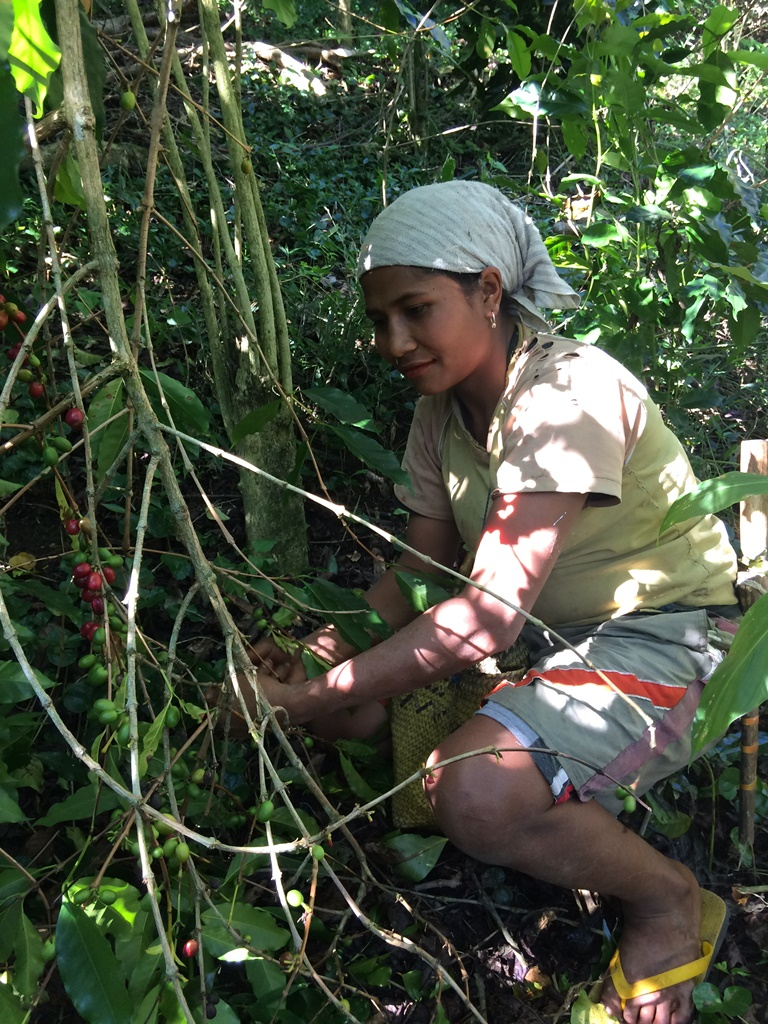
Shipping Period
|
|
Main : April until November |
Transit Days
|
Port of Shipment |
Region |
Imp. |
EU |
US |
|
Panjang |
South Sumatera |
45% |
40 |
30 |
|
Belawan |
North Sumatera |
30% |
40 |
30 |
|
Surabaya |
East Java |
10% |
40 |
30 |
|
Semarang |
Central Java |
10% |
40 |
30 |
|
Makassar |
South Sulawesi |
5% |
40 |
30 |
Countries of Export
1. USA
2. Malaysia
3. Italy, Japan, Germany
The main ports of loading are Panjang and Belawan, south and north port of Sumatra.
And there are Surabaya/East Java, Makassar(Ujung Pandang)/Sulawesi and Semarang/Central Java for coffee export. Occupying 70% from both ports of Sumatra.
ICO Figures
Nice to know
Indonesia produces green coffee beans around 10 – 11,000,000 bags annually. As the country is laid wide longitude and across equator, we can see more diversity in the process and supply than any other origins.
Signature arabica of Indonesia is Mandheling, or Sumatera. There are choices such as Sulawesi, Java, Bali and Flores. Even robusta coffee, WIB/1 is very unique quality for its process and quality.
Classifications
By region
Indonesia is truly unique among coffee producing nations as it is an island nation. The largest ones are Iryan Jaya (West New Guinea), Kalimantan (Borneo), Sumatra Sulawesi (Celebes), Sidikalang (Northern Sumatra) and Java. Since coffee in Indonesia is grown on several different islands, each variety is distinctive, as opposed to the more homogeneous coffees grown in Ethiopia, Kenya, Brasil and Peru for instance. Each island has its own particular minerals, soils, climate conditions, elevations, all of which contribute to the differences in their coffees' characteristics.
Sumatra for instance has Takengon in Aceh province which is a mountainous region.
In that region you have the Gayo mountains where the coffee is wet processed. There is also the well known Mandheling, considered by many as one of the world's finest coffees, where 'natural coffees' are produced. There is of course also Java, another island of Indonesia, whose name is widely recognised in the coffee market. One has probably already heard the wide spread expression of "Give me a cup of Java" or the French referring to "Une tasse de Java". The most famous estates on this island are Blawan, Jambit, Kayumas and Pankur.
South of Sumatera island is the biggest supply of robusta in this origin, that is unwashed and unpolished EK-1. Central to east Java, and across Bali Strait to Bali island, Flores island we can see both of the production arabica and robusta depending on its altitude.
In Sulawesi, once called Celebes, there were quality highland robusta but now had been turned into nice arabica production.
Even Indonesian Papua we can see some arabica but still not easy to control and traffic for its geographical (very far from coffee industries) reason.
Varieties
| Arabica |
Jember |
Kent x Liberica originated in India. Ally : S-LINI, S-795 |
|
|
USDA |
Ethiopia originated brought by USDA project in 1950/60 |
|
|
HdT |
natural hybrid found at East Timor. Ally : TIM-TIM, Ateng, Catimor |
|
|
Sigarar Utang |
Ateng x Jember |
|
Robusta |
Flores |
old variety of robusta planted around Manggarai highland |
|
|
BGN |
Planted at Bangelan estate of PTPN. Naturally yellowish GB |
* Ther are a lot of subspecies both arabica and robusta
Arabica |
|||||||||||||
| Mandheling |
Two major producing area Aceh and North Sumatera, said to the output ratio between the area 60:40 or closer to even. Production had started late 19th century at Angkola area of south of lake Toba and Takengon, Aceh.
|
||||||||||||
| Sulawesi |
Mountainous geography makes its cup profile more complicated. This region is one of the most precipitated area in Indonesia, it gets more than 4,000mm per year sometimes.
|
||||||||||||
| Java |
Bandung is the first place to start coffee enterprises at this country in 17th century but currently Bandung is renaissance for coffee after thriving tea plantation in 20th century. In far east of East Java, there are 4 estates rooted Dutch colony age. Blawan is cultivated in 1920’s and followed Jampit, Pancoer and Kayumas which are now operated as public estates.
|
||||||||||||
|
Flores |
Flores island is next to Komodo island which is famous for giant lizard Komodo Dragon preservation.
|
||||||||||||
| Bali |
|
||||||||||||
Robusta |
|||||||||||||
| South Sumatera |
|
||||||||||||
| Central Java |
|
||||||||||||
|
East Java Bali Flores |
|
||||||||||||
|
East Java |
|
||||||||||||
| East Java (private wet mil) |
|
By grade
| Grade 1 |
Total value of defects maximum 11 |
Mandheling G:1, Java Arabica G:1 (A/WP-1), WIB/1 (R/WP-1) |
|
Grade 2 |
Total value of defects between 12 and 25 |
|
|
Grade 3 |
Total value of defects between 26 and 44 |
AP-1 G:3 |
|
Grade 4 A |
Total value of defects between 45 and 60 |
EK-1 G:4 A |
|
Grade 4 B |
Total value of defects between 61 to 80 |
EK-1 G:4 80 defects |
|
Grade 5 |
Total value of defects between 81 and 150 |
|
|
Grade 6 |
Total value of defects between 151 and 225 |
|
Type of defects |
Value of defects |
|
1 black bean |
1 |
Take 300 grams for counting if two more factors shown in one bean, count it with worse defect factor
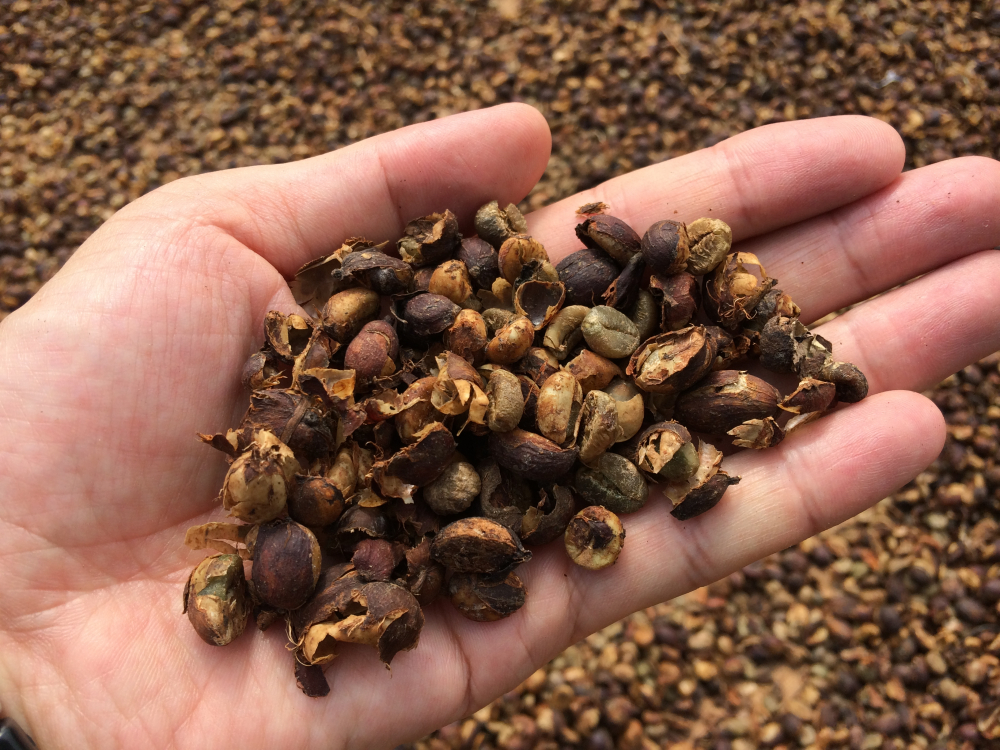
By screensize
|
Arabicas |
the bean size is not specified |
|
|
|
|
up screen 6.5 diameter |
|
M (Medium) |
up screen 6.0 and below 6.5 mm diameter |
|
|
|
S (Small) |
up screen 5.0 and below 6.0mm diameter |
| Robustas |
ELB |
Extra large bean |
|
|
large beans |
up screen of 6.5 mm diameter |
|
|
medium beans |
up screen of 3.5 mm and below 6.5 mm diameter |
| WIB/1 PTPN (R/WP-1) | ||
|
|
L (Large) |
up screen 7.5 mm diameter |
|
|
M (Medium) |
|
| S (Small) |
up screen 5.5 mm and below 6.5 mm diameter |
Allowed 5.0 % max under smaller screen for all quality above !
Typical Description
EK-1 Grade 4
Mandheling (or Sumatera) Grade 1
WIB/1 PTPN
PTPN means PT.Perkubunan Nusantara, national plantation company in English.
Now they say this quality R/WP (Robusta/Wet Process) instead.
Organizing estate group such as Bangelan and Malangsari, Gunung Gumitir, Silosanen and Kaliselogiri etc.
Secret of brilliant green
The processes of Mandheling would be unique for its procedures.
- Pick cherries by hand
- Pulp the cherries in the evening
- Wash the parchment and keep it one night
- Soak the parchment and sun dry for 2-3 days depending on weather (M/C 35% or so)
- Hull dried parchment to wet green beans
- Sun dry wet green beans for 1-2 days till M/C 15-18% normally
- Machine process to remove light and broken, foreign matters (gravity sifter)
Just after hulling wet parchment (M/C 35% or so), wet green beans are still whitish color.
But through the insolation process it gets greenish for the organ differentiation of proplastid to chloroplast.
It is the same process of asparagus; under the sun it gets green but in the dark environment we can make white asparagus.
Processing
The processing in Indonesia is different, depending of the region (island) and the coffee (Robusta and Arabica Washed and Unwashed) that speaking of one processing system is impossible.
| Mandheling Aceh |
Picking |
selectively by hand |
||
|
Washing (1) |
soak light after pulping |
|||
|
Fermentation |
12 hours with or without water at collectors |
|||
|
Drying |
soak after fermentation, syndry parchment by 2-3 days crack on parchment, hulling and sundry again for 1-2 days |
|||
|
Sorting |
gravity sifter, size separator and handpick |
|||
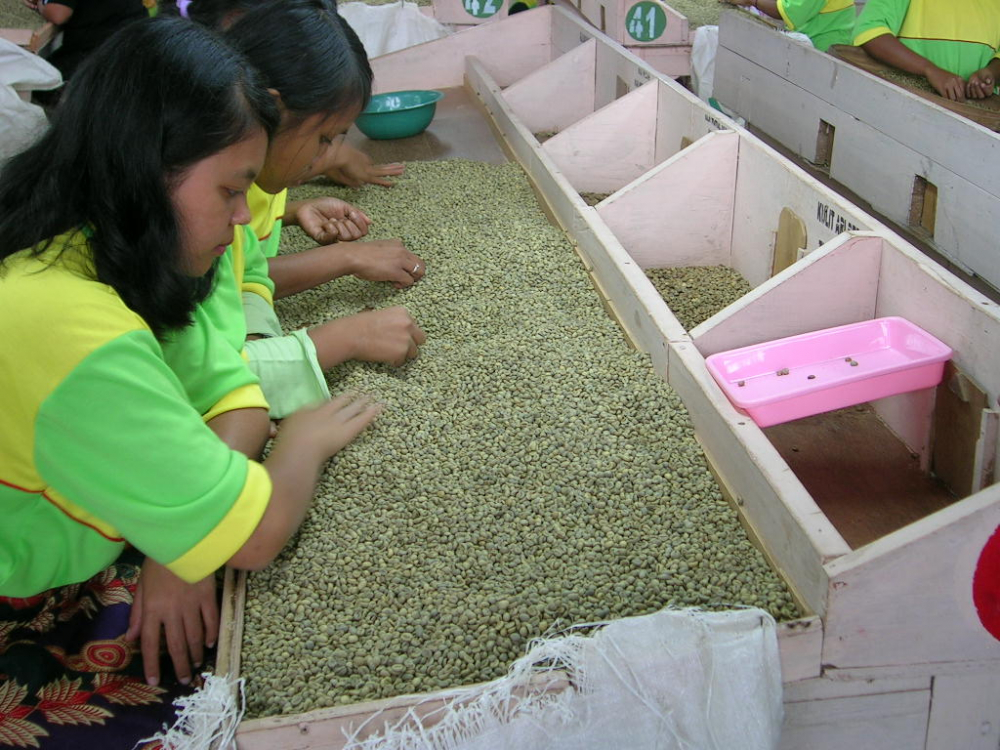
| Mandheling Lintong |
Picking |
selectively by hand |
||
|
Washing |
soak light after pulping |
|||
|
Fermentation |
12 hours with or without water by small farmers each. |
|||
|
Drying |
soak after fermentation, syndry parchment by 2-3 days crack on parchment, hulling and sundry again for 1-2 days |
|||
|
Sorting |
gravity sifter, size separator and handpick |
|||
| Java Arabica PTPN |
Picking |
selectively by hand |
||
|
Washing |
soak in water line after pulping |
|||
|
Fermentation |
36 hours without water |
|||
|
Drying |
soak after fermentation, sundry parchment by 21 days crack on parchment, hulling and sundry again for 1-2 days |
|||
| Hulling |
warehousing for a while and hull dry parchment for processing |
|||
|
Sorting |
gravity sifter, size separator and handpick |
|||
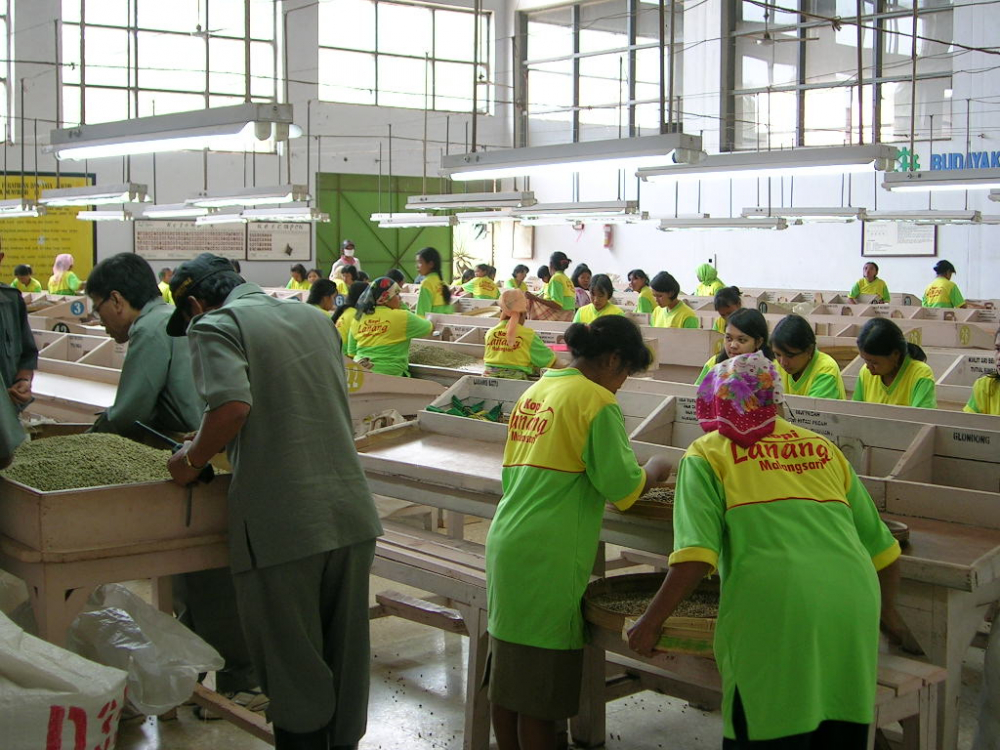
| EK1 |
Picking |
selectively by hand |
||
| Drying |
dry cherries on patio for 2-3 weeks |
|||
| Hulling |
hull dried cherry to green beans |
|||
|
Sorting |
gravity sifter, size separator and handpick |
|||
| AP-1 |
Picking |
selectively by hand |
||
|
Drying |
dry cherries on patio for 2-3 weeks |
|||
| Hulling |
hull dried cherry to green beans |
|||
|
|
Polishing |
use dry polisher normally to remove silver skin |
||
|
Sorting |
pre-cleaner, gravity sifter, de-stoner, size separator |
|||
| WIB |
Picking |
selectively by hand |
||
|
Washing |
segregate inferior cherries removing floaters |
|||
|
Fermentation |
12 hours with or without water at collectors |
|||
|
Drying/PTPN/Private |
use drum dryer with low 40° degree C for 36 hours |
|||
|
Sorting |
gravity sifter, de-stoner, size separator, hand pick |
|||
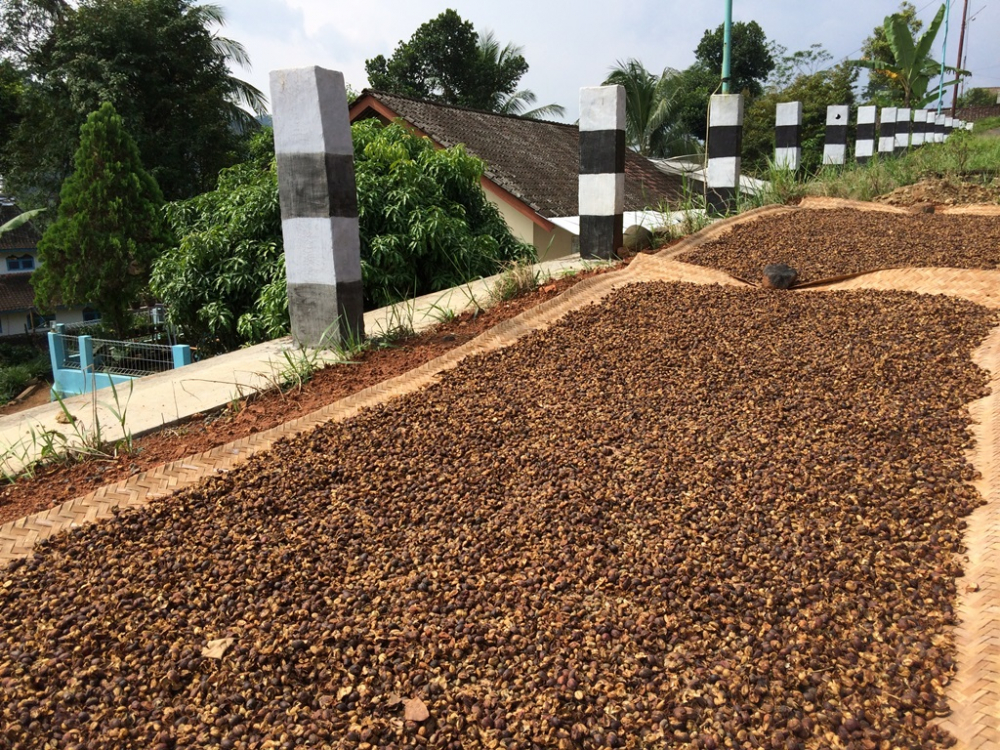
|
Washed Arabicas |
the region is mentioned in the description such as Lintung or Mandheling |
|
Unwashed Arabicas |
are usually offered as Sumatra Arabica D/P (Double Picked) |
Robusta
Indonesia has for long been famous for it's washed Robustas. Two methods have been applied : the so called dry method and wet method.
The dry method is actually a naturally robusta that is cleaned with hot water after it has been sun-dried. Those coffees are called A.P. The origin of that abbreviation is probably 'After Polished'.
When Robustas are processed the classical way, the so called wet method, they used to be classified depending on the quality of the preparation :
|
EK1 |
First quality (in dutch : 'Eerst Kwaliteit') |
|
G.B. |
simple preparation (in dutch : 'Gewone Bereiding') |
|
O.I.B. |
East-Indian preparation (in dutch : 'Oost Indische Bereiding' ) |
|
W.I.B. |
West-Indian preparation (in dutch : 'West Indische Bereiding') |
W.I.B., which is the best preparation, is the most commonly available.
Nowadays there is a new classification (using grades based on defects only (see classification by defects). In practice, however, the old and new classification are often used together.
Coffee Environment
About Exporters
The Department of Industry and Trade is responsible for the international policy on trade, and the Department of Agriculture is responsible for internal production and development. However, in recent years the Indonesian government has followed a policy of deregulation and the main effect has been for it to rely more heavily on the Association of Indonesian Coffee Exporters (AICE) to develop and supervise the industry.
AICE was established in 1979 to represent all the exporters and provide the coordination needed to assist the industry internally and to promote coffee overseas. AICE has 13 branch offices in Indonesia, with the head office in Jakarta. There are over one thousand members of AICE, but only a small part of them are active every year. The function of the members is to buy coffee from the smallholders in an unsorted condition, and then prepare it to the standard required for export. They must finance the purchase of the cherries and the stocks which are kept to meet regular export commitments. In 1990, the industry body introduced new grading standards in line with demands from overseas buyers. This has not only improved Indonesia's reputation in reliability but has also over time improved the quality exported.
Local Consumption
Internal consumption in Indonesia has grown in line with the increase in national prosperity and population. Some decades ago the annual average was 1.5 million bags, whereas now it has grown close to 5.0 million bags. The authorities recognize that production must keep pace with export demands and internal consumption.
The tradional way of consuming coffee is to drink coffee called “kopi bubuk” which is the mixture of deep roasted corn, rice and soy beans with robusta variety. Grind it fine (as “bubuk” means powder in Indonesian language), pour boiled water and put sugar. After settling down enjoy the sweet black liquid. Nowadays along with this way, people in the city have become prefer to taste drip coffee using high quality arabica such as Mandheling or Sulawesi.
Nice to know
Coffee supply in Indonesia is getting to face the issue of younger generation tending to leave farmlands and move to urban settings. This is not only coffee fieldworkers but also hand pickers and warehouse workers.
Population in this country is now 260 million and keep expanding till 2050. These facts are an advantage for the consumption rather than for the production.

